Meet The NASA Engineer Fighting For His Uighur Homeland In China
When the coronavirus hit, Dr. Erkin Sidick thought the global pandemic might convince international investigators to finally visit his homeland in far-West China and look inside the clandestine network of detention camps there.
“I thought we might be able to get somebody to Xinjiang, to East Turkestan, to find out what happened in that land in the last three years and do something,” Sidick said.
The exiled Uighur scientist has been urging international intervention for years. In August 2018, the World Uyghur Congress, an advocacy group Sidick advises, told a United Nations committee they estimated the Chinese government was detaining more than a million Uighurs and other Muslim ethnic minorities in modern day concentration camps. That claim has since been supported by the U.S. Department of Defense and a host of independent researchers and human rights groups.
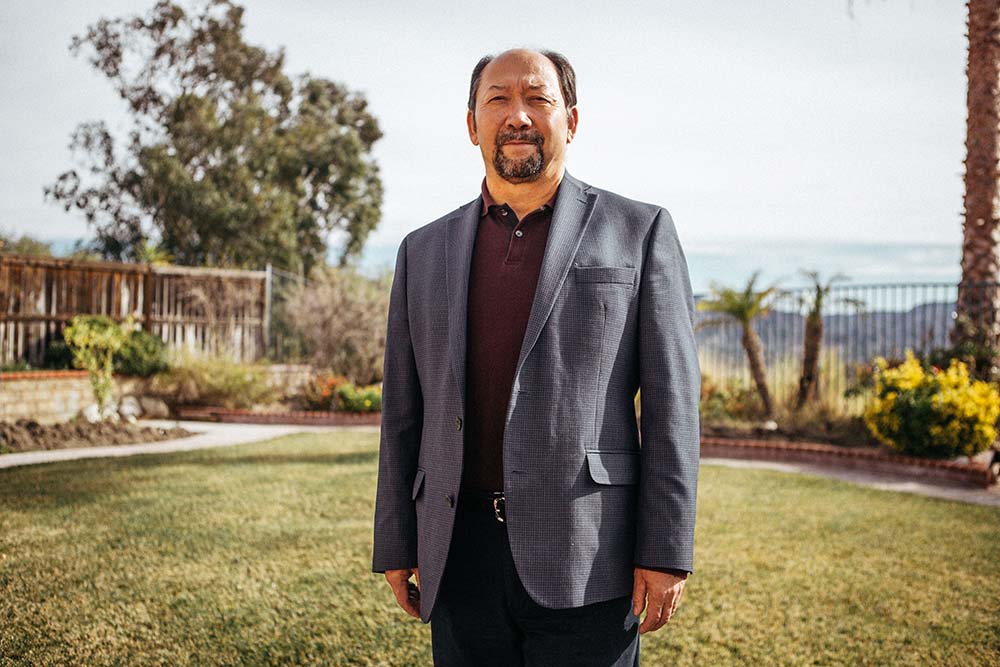
Dr. Erkin Sidick at his home in Santa Clarita. (Chava Sanchez/LAist)
Millions more Uighur families in Xinjiang have been under lockdown in their homes for the past few years, their cultural expressions, movements and communication surveilled and controlled by the Chinese Communist Party. Uighurs who have escaped the camps claim they were tortured and forced to recite CCP propaganda.
“This is a crime against humanity,” Sidick said, from his home in Santa Clarita. “I want to do something to stop it. I sleep very little. I work very hard. I don't have a weekend. Everything that I can do, I am doing it right now, to save those people. I don’t know how many I can save. A lot of people don’t pay attention to this.”
Sidick’s a senior optical engineer at NASA’s Jet Propulsion Lab. When he’s not busy building space telescopes meant to detect planets outside of our solar system, he’s speaking publicly about the plight of his Uighur people.
Now with the Coronavirus, Sidick’s more worried about Xinjiang. Last month, the Chinese government claimed the region of more than 20 million people has less than 100 cases and just a few deaths.
Sidick doesn’t believe those numbers. He’s concerned about millions of Uighurs living under lockdown, especially those packed into camps, prisons and factories where social distancing isn’t an option. Sidick worries outbreaks will be ignored by a Chinese government that’s already proven it doesn’t value Uighur lives.
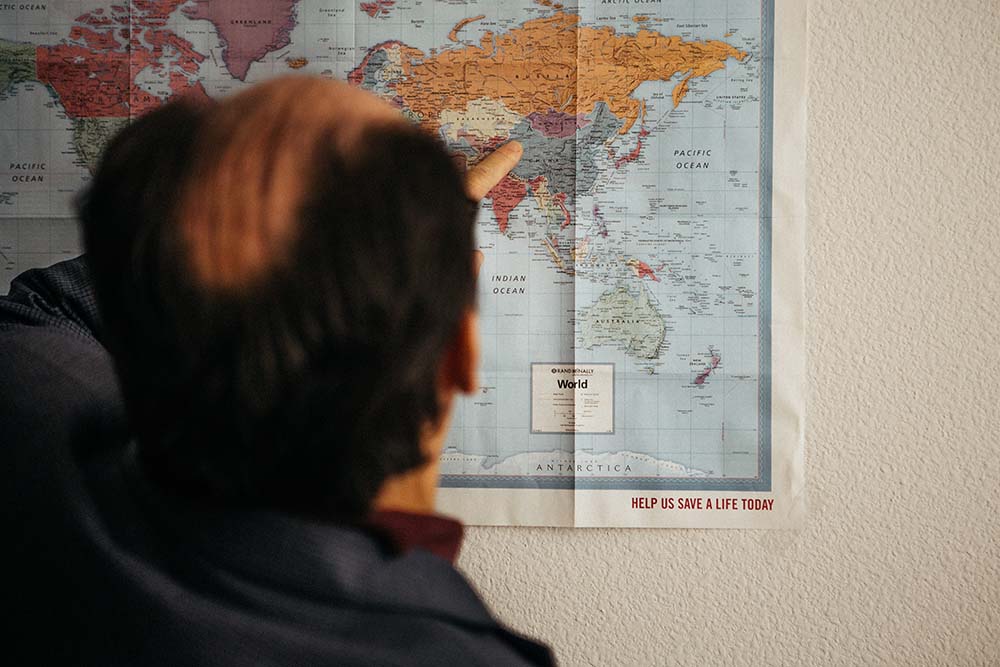
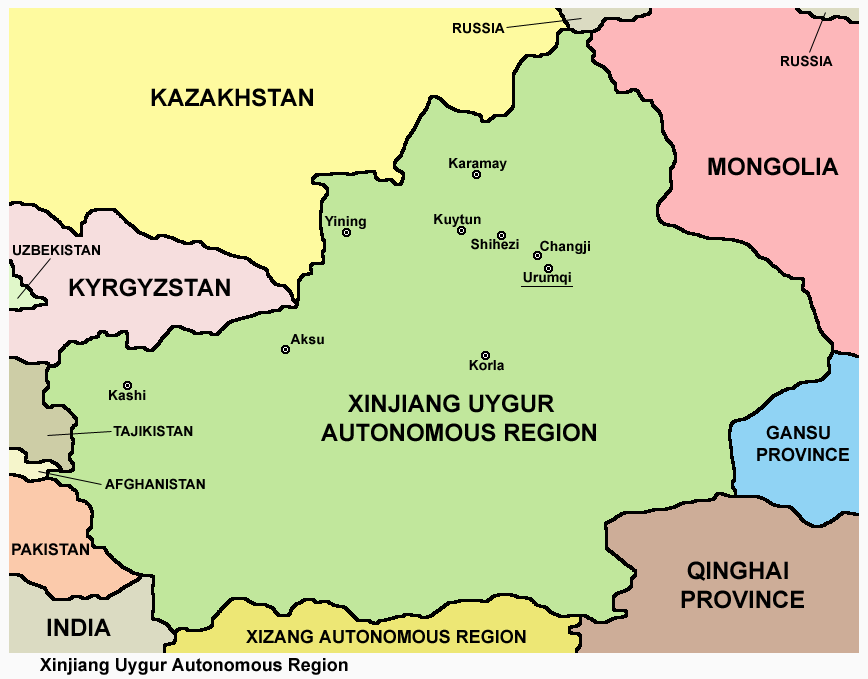
LEFT: Erkin Sidick points out Xinjiang on a map in his home in Santa Clarita (Chava Sanchez/LAist); RIGHT: This map depicts major cities in Xinjiang, a region in far-West China. (Panonian via Wikimedia Commons)
“I CRY, BECAUSE IT’S ALL GONE”
There’s a small community of about 100 Uighur immigrants spread across Southern California. Some identify as exiles. Most came to the Los Angeles area as students, like Sidick.
More local Uighurs have spoken out in recent years, as the Chinese government’s crackdown on their homeland escalated and many could no longer contact family in Xinjiang. Some did so anonymously, fearing retaliation against their relatives.
Sidick runs several organizations supporting Uighur education and culture in the diaspora. Last year, he traveled to 7 countries with small Uighur populations, including Turkey, Canada, Australia and Japan. Since 2018, Sidick has delivered dozens of lectures in classrooms, churches and Islamic centers in Southern California and beyond, harnessing his clout as a NASA engineer to spread awareness about the Uighurs.
When Sidick was recently given 45 minutes to talk to an auditorium full of middle school students, he spoke about space telescopes for 15 minutes, delivered a 20-minute appeal on the Uighur situation and spent his final 10 minutes performing on the dutar, the staple stringed instrument of his imperiled homeland.
“Almost every family has one,” said Sidick, pulling one of the long-necked instruments down from the wall of his Santa Clarita home. “Uighur people love music and social life. Usually when three people get together, they drink, talk, play the dutar, sing. Uighur people are such happy people, but that’s changed. We can’t be happy any more.”
Sidick used to enjoy watching dutar performances on YouTube, but not anymore.
“I cannot watch them,” said Sidick. “I cry, because it’s all gone. The famous singers, the performers, they are all in the concentration camps. So, it just breaks the heart.”
Xinjiang’s most famous dutar player, folk musician and poet Abdurehim Heyit, was arrested in 2017. The ‘Uighur Bob Dylan’ reportedly drew the ire of the Chinese Communist Party after performing a song that borrowed the phrase "martyrs of war" from an old Uighur poem.
“WE COULD DO WHAT OTHER PEOPLE COULD DO”
Sidick was born in Aksu prefecture of China’s Xinjiang Uighur Autonomous Region, which he calls East Turkestan. Back in 1949, an East Turkestan state was briefly declared there, but Xinjiang became part of China later that year. It’s officially designated as an autonomous region within China, like Tibet to its south.
Xinjiang is home to more than 10 million Uighurs, a minority ethnic group that speak a Turkic language, are majority Muslim, and have more in common culturally with Central Asia than Beijing. Uighurs have lived for centuries in cities like Kashgar, along the historic Silk Road trade route. When China took control of the region 70 years ago, Xinjiang was about 80% Uighurs. Now it's just 45%, the result of state-sponsored migration.
Sidick’s advocacy for the Uighur people began as a student in Xinjiang, where he says he experienced discrimination from fellow students in China’s majority ethnic group.
“The Han people thought that the Uighur people were backward,” said Sidick, “I said no. I said we could do what other people could do. Let me prove it. That's my mentality. That's part of the reason that I worked so hard.”
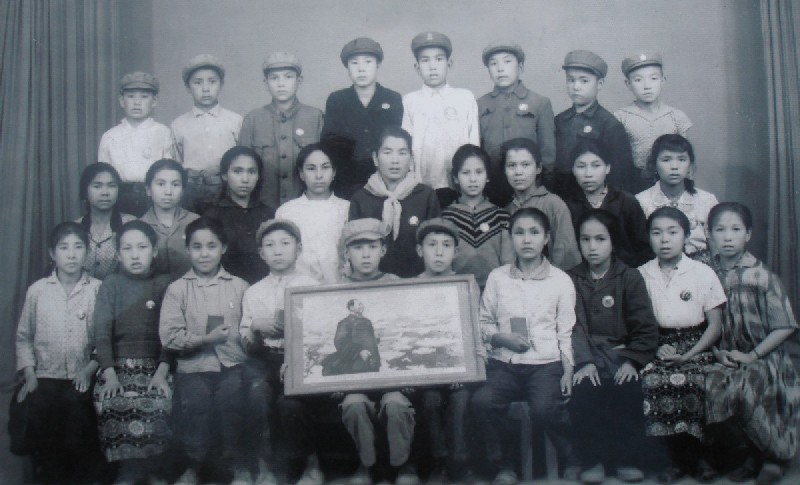
Erkin Sidick (front row, fourth from left) poses with other Uighur students at Aksu No. 4 Elementary School in 1967-1968. (Courtesy Erkin Sidick)
Sidick said he considered the popular slogan of China’s cultural revolution: ‘knowledge is useless’ and took the exact opposite approach, studying hard and scoring high on placement exams.
In 1978, Sidick started at Xinjiang University in the capital city of Urumqi and quickly became the top student in the physics department. He was a student leader and the first Uighur at the school to learn English on his own.
“When I started, nobody believed me,” Sidick said. “They made fun of me. But after a couple of months, the school realized what I was doing and started talking about me in the newspaper and radio.”
ADVERTISEMENT
When Sidick graduated in 1983, he said a Chinese Communist Party secretary told him he had two possible paths: keep pursuing his career in science or become a party official like him. Sidick said the official promised him a privileged life with chauffeur and cook, but Sidick chose an academic career instead.
By the time he came to study at Cal State Northridge in 1988, Sidick was already a poster boy for Uighur education back home. He started a voluntary consulting service, helping other Uighurs figure out how to come to the U.S. to study. Sidick built up a following back home writing online articles in the Uighur language about topics like child care and goal setting.
“That’s how I’ve had some influence,” said Sidick. “That's part of the reason that Chinese governments are afraid of me, the reason I became an enemy for them.”
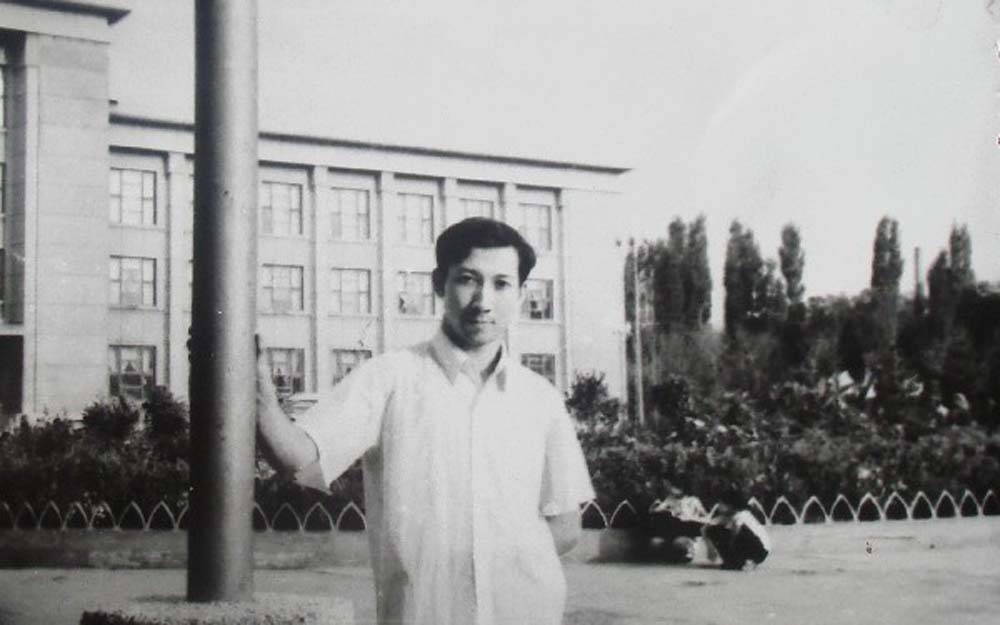
Erkin Sidick posing at Xinjiang University in 1982, while he was president of the Xinjiang University Student Association. (Courtesy Erkin Sidick)
In the 1990s, while Sidick was in Los Angeles, open support for separatist groups in Xinjiang increased after the Soviet Union collapsed and independent Muslim states emerged in Central Asia.
“People were inspired by that,” said Sidick. “They thought, ‘others got independence, why not us? We can’t live under CCP rule.’ If China kept their promise after 1949 and gave us real autonomy, this whole thing could have been avoided.”
In 1998, Sidick co-founded the Uyghur American Association, a Washington D.C.-based advocacy organization. Sidick says this landed him on China’s blacklist. He couldn’t get a visa for the next decade.
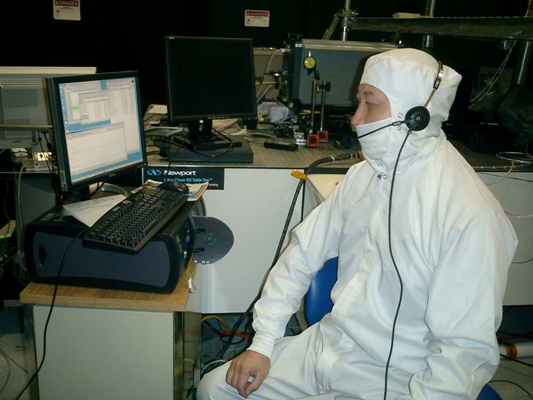
Erkin Sidick at NASA's Jet Propulsion Lab in 2006. (Courtesy Erkin Sidick)
In the 1990s, while Sidick was in Los Angeles, open support for separatist groups in Xinjiang increased after the Soviet Union collapsed and independent Muslim states emerged in Central Asia.
“People were inspired by that,” said Sidick. “They thought, ‘others got independence, why not us? We can’t live under CCP rule.’ If China kept their promise after 1949 and gave us real autonomy, this whole thing could have been avoided.”
In 1998, Sidick co-founded the Uyghur American Association, a Washington D.C.-based advocacy organization. Sidick says this landed him on China’s blacklist. He couldn’t get a visa for the next decade.
CHINA’S BRUTAL CAMPAIGN
Sidick’s last trip home was in June 2009, when he met with hundreds of students for a Q&A session at Xinjiang University.
One month later, long-held grievances over preferential treatment of Han immigrants erupted into ethnic violence in Xinjiang’s capital city. About 200 people were killed during the Urumqi massacre, most of them Han Chinese, according to officials.
In the decade since, tensions and acts of separatist violence have grown. So has the Chinese government’s crackdown on Uighurs.
ADVERTISEMENT
“After 2009, the government made it a criminal act to meet me or communicate with me,” said Sidick. “Most of the students I met with were later interrogated, prevented from graduating or disappeared.”
Sidick knows many Uighurs back home who have died, and many more who have been detained, including Uighur writers and academics. Even some of the students in Xinjiang who Sidick has emailed with have faced consequences, he said. Sidick claims another Uighur man in Xinjiang named Erkin Sidick, no relation, was arrested, tortured and later died, simply because the two men shared a name.
“That's what keeps me awake at night and doing everything I can do,” Sidick said.
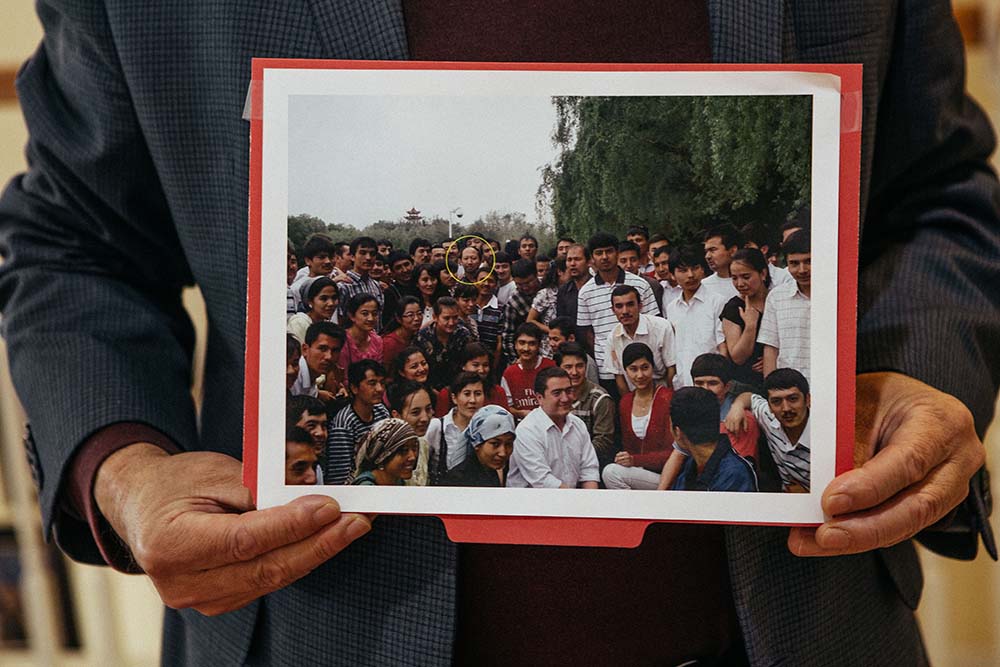
Erkin Sidick holds a photo of himself posing with dozens of students who he spoke with at Xinjiang University on his last visit in June 2009. (Chava Sanchez/LAist)
In 2014, China launched its ‘Strike Hard’ campaign targeting Uighur culture under the stated goal of preventing terrorism. President Xi Jinping urged the party to emulate aspects of America’s post-9/11 “war on terror,” according to government documents.
A few thousand Uighurs did come to Syria to fight with ISIS, according to Syrian officials. China has also blamed a group called the East Turkestan Islamic Movement for sepratist violence in Xinjiang. But the Chinese government has been cracking down even on moderate expressions of Islam and peaceful discussions of independence.
Xinjiang has become a fully-fledged police state, where millions of Uighur residents are intensely surveilled around the clock and threatened with detention for any expression of their Uighur culture.
INFORMATION FROM HOME
From his home office, Erkin Sidick records regular video updates he calls “New Information About Our Homeland” for Uighurs in the diaspora. It’s hard to get any verifiable information from home. Sidick hasn’t heard from his own family since 2017. Talking to him could get them sent to a camp.
But thanks to the testimony of exiles and former detainees, government documents, satellite images and some limited on-the-ground reporting, the world has begun to understand the extent of the Chinese government’s campaign against Uighurs.
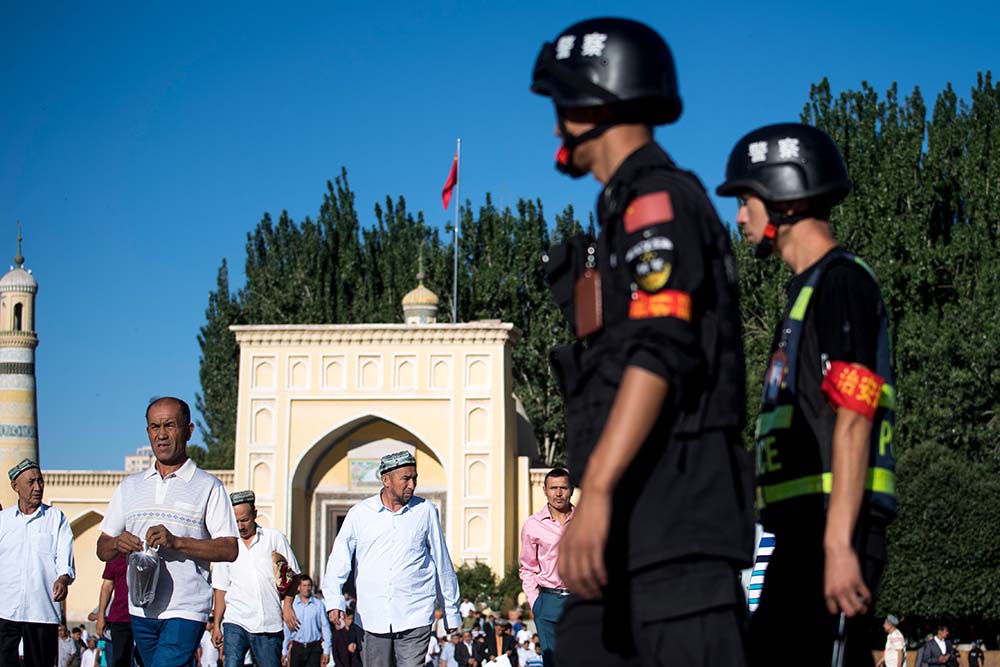
Police patrolling as Muslims leave the Id Kah Mosque after the morning prayer on Eid al-Fitr in the old town of Kashgar in China's Xinjiang region on June 26, 2017. (Johannes Eisele/AFP via Getty Images)
Xinjiang is remote and landlocked, which the Chinese government has used to its advantage, carefully controlling the flow of information in and out of the region. Most of the early information about the detention camps came from Uighurs living abroad like Erkin Sidick.
“These Uighurs have been traveling in and out of the region, they’ve been in touch with their families,” said Adrian Zenz, an independent German researcher. “And it’s from them that we heard the initial anecdotal evidence that people were being detained, that people were disappearing.”
Zenz is a senior fellow in China studies at the Victims of Communism Memorial Foundation. He’s been researching China’s Uighur policy since 2016. His reports and data analysis first revealed the Chinese government was hiring tens of thousands of security workers in Xinjiang and later helped establish estimates of a million people or more people in detention.
Zenz’s key source of information has been public government documents like construction bids that gave specific details about the size and scope of individual camps.
“They were not expecting people to analyze these Chinese language documents and to understand what exactly they pertain to,” said Zenz.
Last year, leaked classified Chinese government documents dubbed the China Cables provided even more evidence as to the true nature of its brutal campaign.

The Artux City Vocational Skills Education Training Service Center, believed to be a re-education camp where mostly Muslim ethnic minorities are detained. (Greg Baker/AFP via Getty Images)
INTERNATIONAL RESPONSE
After a UN committee discussed the Xinjiang detention camps in July 2018, China finally acknowledged their existence, but officials claimed they were “vocational training centers” meant to “educate and transform” people influenced by Islamic extremism. Later that year, China retroactively legalized the internment camps and Chinese state media ran news stories spinning detention as a positive experience for Uighurs.
In March 2019, the U.S. and several other western countries hosted a panel at a human rights summit in Geneva where Adrian Zenz and other experts testified about the Xinjiang camps. In July of last year, representatives from 22 countries in the UN’s top human rights body issued a joint statement requesting the UN to launch an inquiry into China’s violations against Uighurs. Days later, ambassadors from 50 other nations issued a competing letter praising Beijing’s human rights record in Xinjiang.
U.S. officials didn’t sign either one, but they have openly condemned China’s Uighur policy. Secretary of State Mike Pompeo called it “the stain of the century.” The Trump administration also appointed a Uighur American academic as the China director at the National Security Council, a move that pleased many U.S.-based Uighurs like Sidick.
“The U.S. has been the best country so far in helping the Uighur people try to solve this problem,” said Sidick. “But the whole world, like the UN and European Union, are moving very slowly. Uighur people are dying on a daily basis, by the thousands. This is a genocide already.”
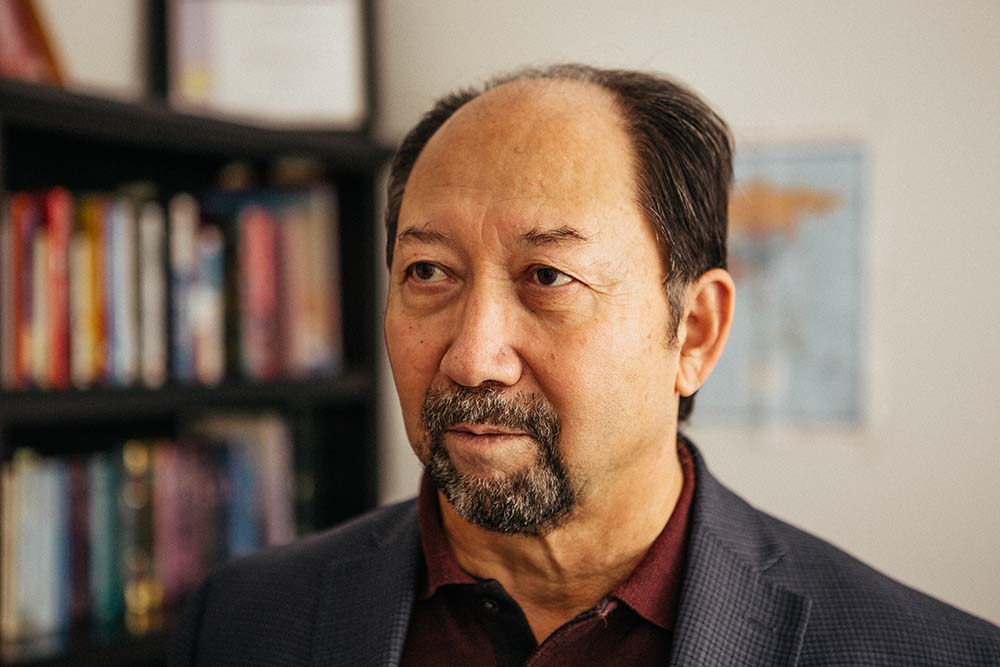
Dr. Erkin Sidick, a NASA optical engineer and exiled Uighur advocate living in Southern California. (Chava Sanchez/LAist)
“PEOPLE AREN’T TALKING ABOUT UIGHURS ANYMORE”
Since the coronavirus outbreak began, the Trump Administration has signalled an interest in blaming China for its spread. President Trump has sometimes described it publicly as the “Chinese Virus” or “Wuhan Virus,” labels experts warn encourage xenophobia and racism.
The Department of Homeland Security believes the Chinese Communist Party covered up the extent of the Coronavirus outbreak to stockpile medical supplies needed to respond to it, according to an intelligence report obtained by the AP. This week, Secretary Pompeo accused the CCP of “creating enormous risks” by hiding the full truth about coronavirus from the world, vowing to hold the Chinese government accountable.
“Hundreds of thousands of people around the world, and tens of thousands in the United States, have been harmed,” Pompeo told ABC News. “President Trump is very clear: We’re going to hold those responsible accountable, and we’ll do so on a timeline that is our own.”
At first, Sidick thought all the criticism of the CCP’s Coronavirus response by U.S. officials might help bring more attention to the plight of the Uighurs.
“I thought that maybe with the Coronavirus, the world would understand how evil and dishonest the Chinese regime is,” Sidick said. “And they would start to trust and believe what we’ve been telling them about what China is doing to Uighurs.”
The World Health Organization and the United Nations have been silent about the danger coronavirus poses to detained Uighurs. Chinese Communist Party officials have dismissed concerns about coronavirus in Xinjiang in state media, touting virus prevention efforts in the region.
ADVERTISEMENT
But former detainees say Xinjiang's hundreds of detention camps are overcrowded, dirty and full of abuse. With Coronavirus causing productivity declines across China, Sidick and other Uighurs abroad are also worried that Uighurs are being used to fill the labor gaps, despite risks of infection.
It’s possible they are right. A recent leaked government document from Xinjiang shows that some Uighur detainees are being “released” from detention camps into factory parks in other parts of China. In February, while the Coronavirus was at its peak in China, state media reported that hundreds of workers were transferred from Xinjiang to other provinces.
Last month, a think tank called the Australian Strategic Policy institute reported that at least 27 factories in nine Chinese provinces were relying on the forced labor of 80,000 or more Uighurs transferred from Xinjiang since 2017 under a policy called “Xinjiang Aid.” Those factories produce goods for brands including Apple, Nike, BMW, Samsung, Sony and Volkswagen, according to the report.
Researcher Adrian Zenz says we just don’t know what’s happening in Xinjiang today, especially when it comes to the Coronavirus pandemic.
“Xinjiang might have the benefit that it is already a highly-controlled environment with gated communities, high police presence and a strong surveillance apparatus,” said Zenz. “Enforcing social distancing is easier in Xinjiang. Obviously, there's no social distancing inside of internment camps or crowded factory compounds. So it's really hard to say what the situation is.”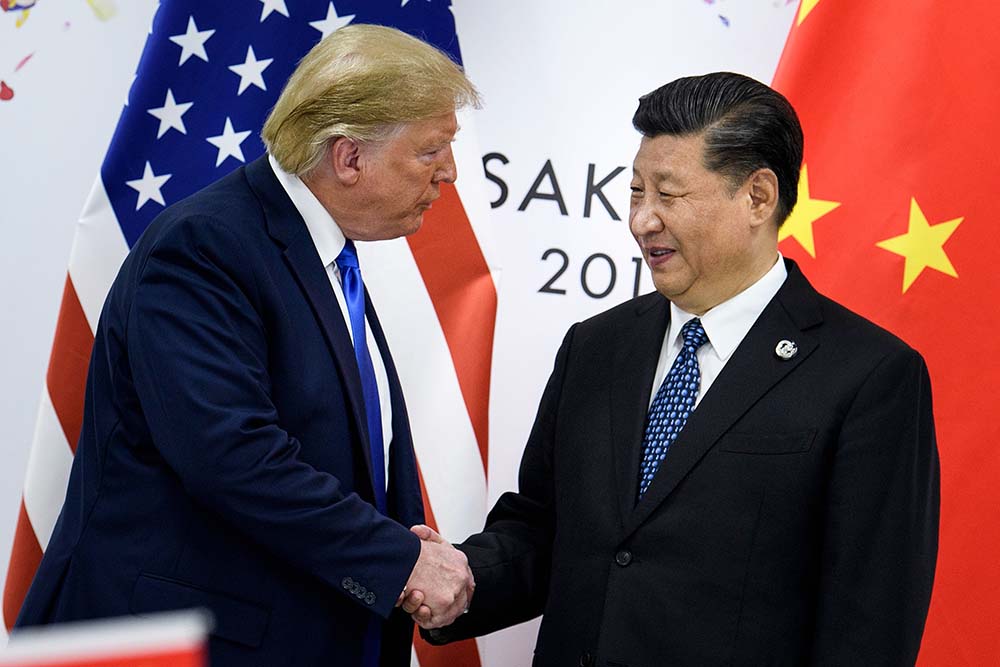
China's President Xi Jinping shakes hands with U.S. President Donald Trump before a bilateral meeting on the sidelines of the G20 Summit in Osaka in July 2018.(Brendan Smialowski/AFP via Getty Images)
Months into the coronavirus crisis, Sidick is no longer hopeful that the pandemic can help force the Chinese government to confront its repressive policies in Xinjiang.
“People aren’t talking about Uighurs anymore,” said Sidick. “All the media reports are about the Coronavirus. It’s very sad. China is doing things openly now because nobody cares about it. This is inhumane, what they're doing. They want to get rid of an entire people, and the only reason is because we are a different race.”
China’s Uighurs now face two existential threats: government-sponsored repression and a deadly pandemic. Sidick doesn’t expect anyone will step in to save them from either one.
“Now, I feel that the Uighur loss might be permanent,” Sidick said. “But I will keep fighting.”
Aaron Schrank covers religion, international affairs and the Southern California diaspora under a grant from the Henry Luce Foundation and with support from USC's Annenberg School of Journalism.


